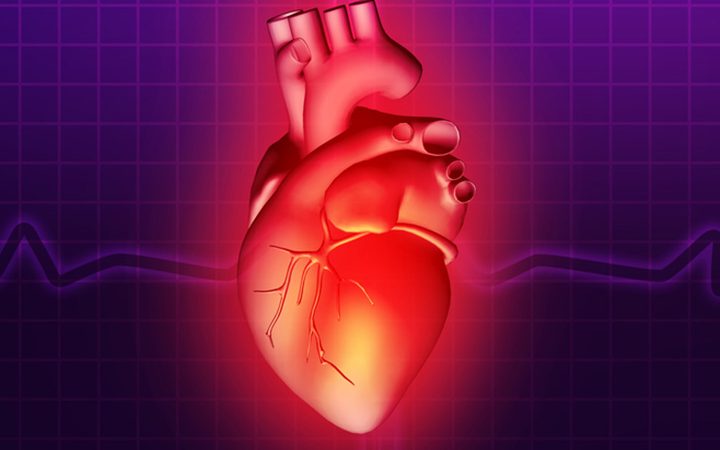Cyanotic heart disease or cyanotic congenital heart disease (CCHD) is a group of heart defects present since birth. Due to these defects, there’s a low oxygen supply in the infant’s body, causing the skin and mucous membrane to turn blue. The phenomenon is known as cyanosis (1). Besides cyanosis, a dip in body oxygen levels can cause restlessness, breathing difficulties, and feeding trouble in infants.
Persistent low oxygen supply can cause severe complications, which may turn life-threatening without prompt treatment. Therefore, its timely diagnosis and treatment are necessary. Read on to know the types, causes, symptoms, and treatment of cyanotic heart disease.
Types Of Cyanotic Heart Disease
Depending on what heart defect causes the baby to develop cyanotic heart disease, it can be classified into the following types (2).
1. Tetralogy of Fallot (TOF)
It’s the most common cause of CCHD where the baby is born with four different defects.
- Overriding aorta (OA): Under the normal physiological mechanisms, the main artery (aorta) carries the oxygenated (oxygen-rich) blood from the heart’s left chamber to the body. But, in OA, the aorta carries the oxygenated and deoxygenated blood from the heart’s lower chambers to the body. Due to this, the body receives deoxygenated blood, causing oxygen scarcity.
- Ventricular septal defect (VSD): Generally, VSD is an anatomical defect where there’s an opening in the heart wall (septum). In TOF, there’s a large opening in the wall between the left and right lower heart chambers (left and right ventricles). Due to this, the deoxygenated blood gets mixed with the oxygenated blood, causing a low oxygen supply to the body.
- Pulmonary stenosis: Pulmonary arteries are the two arteries that carry oxygen-less or deoxygenated blood from the right side of the heart to the lungs (3). In TOF, narrowing (stenosis) of the pulmonary valve between the lower right heart chamber and the pulmonary artery occurs. Due to this defect, deoxygenated blood flows from the pulmonary artery to the lungs, resulting in low blood oxygen levels.
- Right ventricular hypertrophy: Pulmonary stenosis over time causes the lower right heart chamber to struggle to pump blood. Eventually, this causes the thickening of the chamber wall, which is known as right ventricular hypertrophy.
2. Transposition of the great vessels (TGV)
In TGV, the pulmonary artery and aorta’s positions in the respective ventricles are reversed. Due to this, the right ventricle pumps deoxygenated blood through the aorta to the rest of the body, causing low blood oxygen levels. TGV has different types, and each type varies slightly based on the placement of the vessels and openings, resulting in blood mixing between the two sides of the heart.
3. Pulmonary atresia
It’s a congenital heart defect wherein the opening between the right ventricle and pulmonary artery is blocked (ventricular septal defect). This blockage results in the enlargement of the heart and diminished functioning of the blood vessels in the lungs.
4. Total anomalous pulmonary venous return (TAPVR)
It’s a congenital heart defect wherein the pulmonary veins from the lungs don’t connect with the heart’s left chambers. Instead, they connect to the right side of the heart. It causes the oxygenated blood to flow into the right side of the heart. TAPVR can be of different types based on where the pulmonary veins connect.
5. Truncusarteriosus
It’s a congenital condition where a baby is born with one large blood vessel instead of two separate blood vessels, causing the blood from both the heart ventricles to mix.
6. Hypoplastic left heart syndrome
A baby with this defect is born with an underdeveloped left ventricle and aorta. Due to this, the right ventricle gets in charge of pumping blood to the lungs and body.
Besides these, tricuspid valve abnormalities can cause cyanotic heart disease. In tricuspid valve abnormalities, the tricuspid valve doesn’t develop properly during the intrauterine life. This defect disrupts the blood flow and causes the mixing of the oxygenated and deoxygenated blood.
Symptoms Of Cyanotic Heart Disease
An infant or baby with cyanotic heart disease or critical cyanotic heart disease may show the following symptoms (4) (5).
- Development of blue skin on and around the lips, fingers, nail beds, and toes (cyanosis)
- Breathing difficulties or dyspnea
- Anxiety and fatigue
Mostly, cyanosis doesn’t occur if there’s only one defect. In most cases, more than one defect is present in individuals with cyanotic heart disease.
Besides these, a baby may exhibit some additional symptoms due to the specific defect. Here are additional symptoms you may observe in specific defects.
Symptoms Of Tetralogy of Fallot (TOF)
These symptoms of TOF vary from one baby to another. In addition, their severity depends on the intensity of the obstruction of blood flow (6).
- Poor appetite
- Slow weight gain and poor growth
- Enlarged tips and overhanging nails on the fingers and toes (clubbing) in older children
- Polycythemia or an abnormal increase in the RBC count
- Extreme irritability due to low oxygen supply
Symptoms Of Total Anomalous Pulmonary Venous Return (TAPVR)
Symptoms of TAPVR usually appear after birth or soon afterward. These symptoms include (7):
- Pounding heart
- Weak pulse
- Poor feeding
- Extreme sleepiness
Symptoms OfHypoplastic Left Heart Syndrome
Infants born with HLHS may not show any symptoms immediately after birth. But, they do it within a few hours or days of birth. Some of these symptoms are (8):
- Cold and clamp hands and feet
- Lethargy due to low oxygen supply
- Poor suckling and feeding
- Low output of urine
- Weak pulse and fast heartbeat
- Shortness of breath
Note: If a baby has cyanosis, it doesn’t necessarily mean they have cyanotic heart disease. Blueing of the skin and mucous membrane can also occur from a pulmonary issue.
Risk Factors For Cyanotic Heart Disease
Certain medical conditions and genetic inheritance are considered to play a role in developing cyanotic heart disease. Here’s a list of those risk factors (5) (9).
- Family history of congenital heart disease
- Exposure to illicit drug use and certain chemicals, such as teratogens, during pregnancy
- Infections, such as Rubella, during pregnancy
- Poorly controlled gestational diabetes
Besides these, cyanotic Heart Disease may occur in association with genetic syndromes, such as Down syndrome, Turner syndrome, Marfan syndrome, trisomy 13, and Noonan syndrome.
Diagnosis Of Cyanotic Heart Disease
After childbirth, a doctor does the baby’s physical examination and checks their vitals, such as heartbeat, using a stethoscope. If they notice cyanosis or any other signs that may indicate cyanotic heart disease, they are likely to order additional tests to corroborate their findings (5).
1. Chest X-ray
A chest X-ray helps the doctor see the heart’s shape and size, including the position of the arteries and veins. It may help in differentiating pulmonary and cardiac issues. A chest x-ray can also help see if the pulmonary blood flow has increased, decreased, or is normal.
2. Echocardiogram or ECHO
The doctor may order an ECHO test to get more details than what an X-ray can reveal. ECHO is a non-invasive test to locate the structural and valve abnormalities and critical defects in babies and children.
3. Electrocardiogram (EKG or ECG)
It’s another non-invasive test that records the heart’s electrical activity. The doctor may order an EKG to determine how the heart chambers are working. If the electrical activity is high, it typically means that the heart is overworking.
The doctor may use a Holter and event monitors if they need to monitor the baby’s heart activity for a longer time (ambulatory monitoring). Holter and event monitors can detect abnormal EKG changes that a standard EKG may miss.
4. Cardiac catheterization
It’s an invasive test wherein a long, thin tube or a catheter is inserted into the heart’s blood vessels from the groin or the arm. It allows the doctor to see the heart’s chambers, arteries, and veins and detect abnormalities. Aside from diagnosis, cardiac catheterization also helps in treating congenital heart defects in babies and children.
Besides these, the doctor may ask for additional tests, such as angiography, magnetic resonance imaging (MRI), and CT scanning, if needed to do a deeper analysis of a baby’s condition.
Treatment For Cyanotic Heart Disease
Treatment for cyanotic heart disease depends on the type of defect causing the problem and its severity. In some cases, the baby could require an extended hospital stay after birth to receive breathing support. Additionally, they may need medication to (9):
- Remove extra fluids from the body
- Help the heart pumping better
- Open the blood vessels
- Regulate abnormal heart rhythm
In some cases, immediate surgery after birth is necessary to save the baby. Some cases can wait until the baby is older. In the meantime, the doctor may prescribe medications to offer symptomatic relief.
Possible Complications Of Cyanotic Heart Disease
An infant born with cyanotic heart disease may develop the following complications over time (9).
- Abnormal heart rhythms
- Developmental delay and disability
- Chronic or persistent high blood pressure
- Heart infection
- Heart failure or stroke
Cyanotic heart disease can turn severe if not detected and treated promptly. Depending on the underlying defect and its severity, the treatment varies. In mild cases, the child may need medications and some other treatments to live a normal life. Severe cases could require immediate surgery after birth. The healthcare provider or doctor will decide what treatment modality is suitable for the child.
References:
MomJunction’s health articles are written after analyzing various scientific reports and assertions from expert authors and institutions. Our references (citations) consist of resources established by authorities in their respective fields. You can learn more about the authenticity of the information we present in our editorial policy.



































